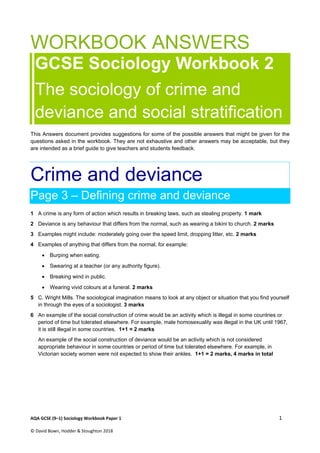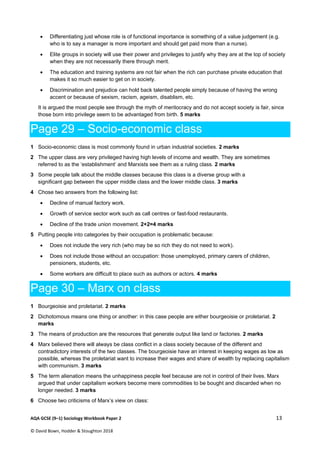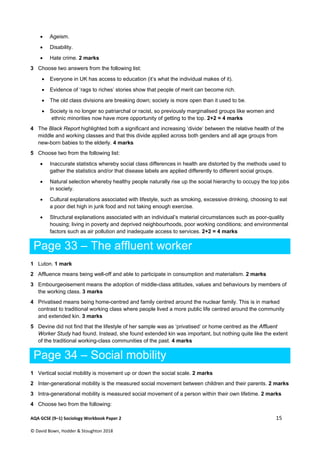The document provides sample answers to questions from workbooks on the sociology of crime and deviance and social stratification. It defines key concepts like crime, deviance, and the social construction of crime and deviance. It also summarizes factors that affect criminal behavior, such as biological, psychological, sociological, and labeling theories. Additional topics covered include measuring crime through statistics, surveys and self-reports, as well as the influence of social class, gender, ethnicity, and age on criminal behavior. Control theories involving informal social controls through the family and peers as well as formal controls of the criminal justice system are also briefly discussed.























